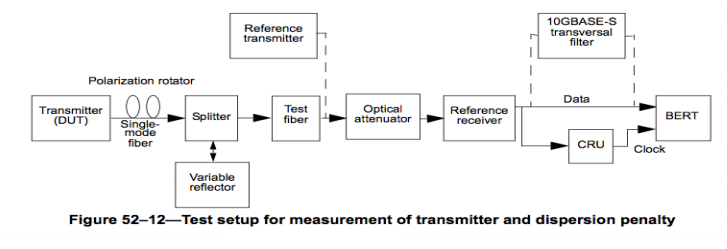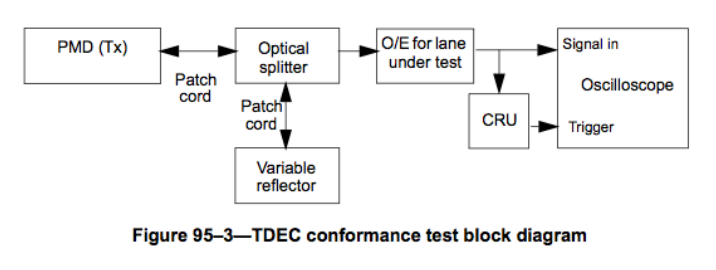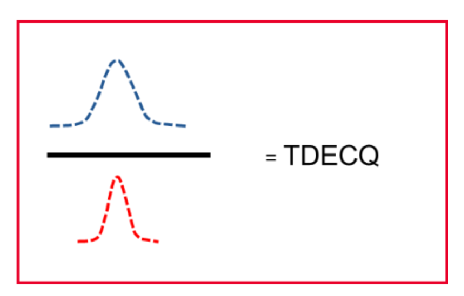We know that for PAM4 testing, one of the most important indicators of TX is TDECQ, and the smaller the TDECQ the better, so what is TDECQ?
The PAM4 signal will bring a huge change in test parameters and methods, the original Mask margin is no longer applicable to the PAM4 test, and new test parameters are needed. This is TDECQ.
TDECQ is called the Transmitter and Dispersion Eye Closure for PAM4.
It is an important index to evaluate the optical emission communication quality of PAM4. It is a power penalty, which is the extra noise ratio when the transmitter and the ideal transmitter get the same bit error rate. TDECQ is an estimate. SECQ is a measured value, but the test is quite complex, so it is common to use the estimated TDECQ as the evaluation criterion.
As we know, the most direct parameter to measure the performance of a transmitter is TDP. There is a relatively complex test system. The simplest method TDP can be considered as the difference in sensitivity before and after fiber crossing.

With the advent of 100G SR4, the name was changed to TDEC (Transmitter and Dispersion Eye Closure) in 802.3. It is no longer required to be any error codes in transmission but can tolerate 5E-5 BER and ensure the optical transmission performance of the system by FEC (Forward Error Correction Code). No BERT is required, it is the oscilloscope plus algorithm that is needed. Some algorithms are used to simplify the test architecture thus obtaining TDEC.

TDECQ is a test of PAM4 signals based on TDEC. Without a bit error rate tester, the oscilloscope can simulate TDECQ by algorithm calculation.

TDECQ = (ideal transmitter noise margin)/(measured transmitter noise margin)
When the random noise of the measured signal increases, the signal amplitude remains the same, and the corresponding ideal signal does not change. The superimposed random noise reduces the noise margin of the transmitter under test so that the denominator in the TDECQ formula decreases.
Therefore, the greater the noise, the greater the TDECQ. A limiting case is when the superimposed random noise size causes the noise margin of the transmitter under test to be zero (the BER corresponding to the eye diagram tested at this time is exactly equal to the BER limit required by the specification.
When the signal passes through the optical attenuator, the amplitude of the signal decays in the same proportion as the amplitude of the noise, so the signal-to-noise ratio of the signal does not change with the change of the attenuator.
Although the eye diagram displayed on the oscilloscope will gradually blur as the signal power decreases, this is due to the noise of the oscilloscope superimposed on the measured signal, and the noise of the oscilloscope is not changed with the attenuator.
And in order to accurately test the TDECQ value, the oscilloscope noise should not be included in the test, so the ideal TDECQ results should not change with the signal attenuation changes.
When the signal power is too low, the signal has been drowned out by the noise of the oscilloscope, then the TDECQ value can not be measured, and will display as previously shown “SER?”.
Notes:
- SSPRQ (Short Stress Pattern Random Quaternary) is a completely artificially constructed new code pattern. Its advantage is that it can apply enough pressure to the transmitter under test to test its performance under real service, and has the characteristics of short code pattern so that the sampling oscilloscope can capture the whole code pattern for signal processing such as equalization. SSPRQ is the code type for TDECQ testing.
- In the TDECQ test, the loop bandwidth required for CDR is 4 MHz.
